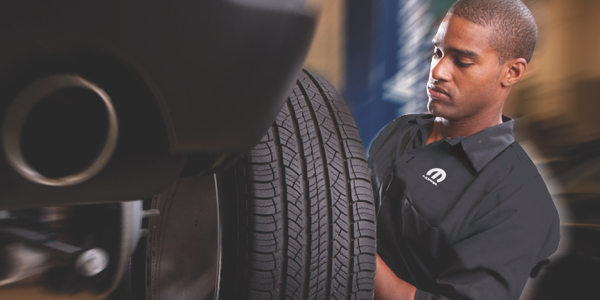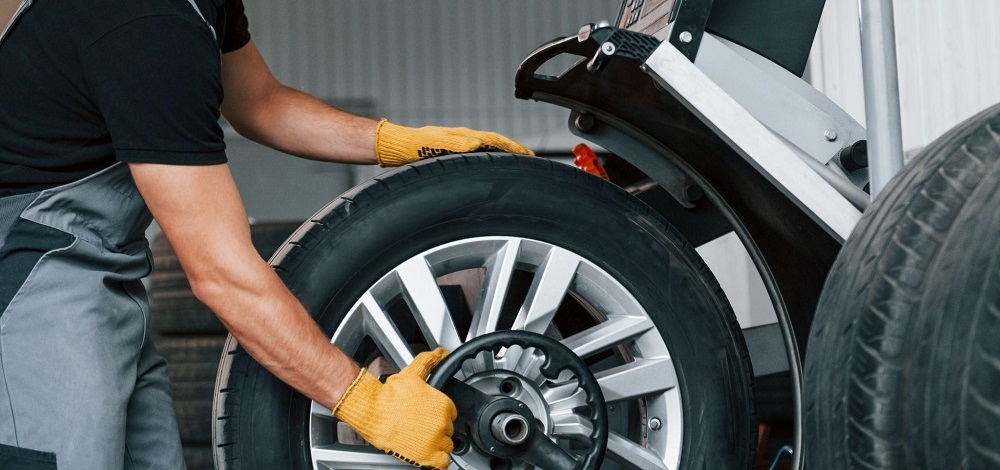Tire Solution: The Effect of Weather
When it comes to making certain ideal performance and safety on the roadway, comprehending the impact of weather problems on tire service is essential. GMC Tire Service. In this discussion, we will discover the intricate partnership in between climate conditions and tire solution, losing light on the importance of weather-specific tire maintenance practices and factors to consider.
Warm and Tire Performance
When subjected to high temperatures, tires experience modifications in efficiency that can substantially influence lorry safety and handling. The warmth generated from long term driving or heat conditions triggers the tire rubber to soften, leading to lowered tread life and boosted wear. As the rubber becomes softer, the tire's grip when driving reduces, affecting braking ranges and overall grip. In extreme cases, excessive warm can also create tire blowouts, posturing an extreme security threat to the lorry and its occupants.

Cold Weather Condition Results
Cold climate problems can have a significant effect on tire performance and safety. In cold weather condition, tires may likewise lose air stress a lot more swiftly, which can influence taking care of and gas effectiveness.
To alleviate the effects of cold weather on tires, it is critical to consistently check tire stress and inflate them to the supplier's recommended levels. Making use of winter months or all-season tires developed for winter problems can additionally improve traction and hold on icy or snowy roads. Correct tire upkeep, including routine assessments for wear and damages, ends up being even much more crucial throughout colder months to guarantee optimum performance and safety and security.
Rainy Conditions Impact
Tires with worn-out treads are extra vulnerable to hydroplaning, where a layer of water develops up between the roadway and the tire surface, leading to loss of traction. To combat this, vehicle drivers should regularly check their tires for adequate tread deepness and take into consideration spending in tires especially developed for damp problems.
Furthermore, stormy climate can also reduce exposure, making it challenging for vehicle drivers to see the road ahead plainly (GMC Tire Service). In such problems, it is necessary to readjust driving speeds accordingly and preserve a safe following range to allow for unexpected stops. Effectively filled with air tires can also aid in maintaining control More hints on damp roads by providing far better handling and grip
Snow and Tire Safety
Snow-covered roads present unique obstacles for motorists, highlighting the significance of appropriate tire choice and upkeep. When driving in snowy conditions, having the best tires can make a substantial difference in security and efficiency. Winter season tires are created with unique rubber compounds and tread patterns to offer much better grip on snow and ice compared to all-season tires. The much deeper treads and sipes of winter tires help grasp the roadway much better, lowering the danger of moving and slipping.

It is essential to adhere to producer directions when utilizing and setting up tire chains to protect against damage to the tires and car. By selecting the best tires, keeping correct inflation, and taking into consideration extra traction aids like tire chains, vehicle drivers can boost their security when browsing snow-covered roadways.
Weather-Related Tire Maintenance
Weather-related tire maintenance encompasses a variety of techniques aimed at making sure optimum Clicking Here tire feature and durability in various weather scenarios. One vital facet of weather-related tire maintenance is tire stress policy. Checking tire step consistently and replacing tires when step wear gets to a certain depth is vital for preserving grip and security in negative climate.
Final Thought
In final thought, weather conditions have a considerable effect on tire efficiency and security. From warmth influencing tire pressure and put on to cold climate minimizing grip, it is essential to think about the climate his comment is here when maintaining and using tires.
In this conversation, we will explore the detailed connection between weather condition conditions and tire service, losing light on the relevance of weather-specific tire maintenance practices and considerations.